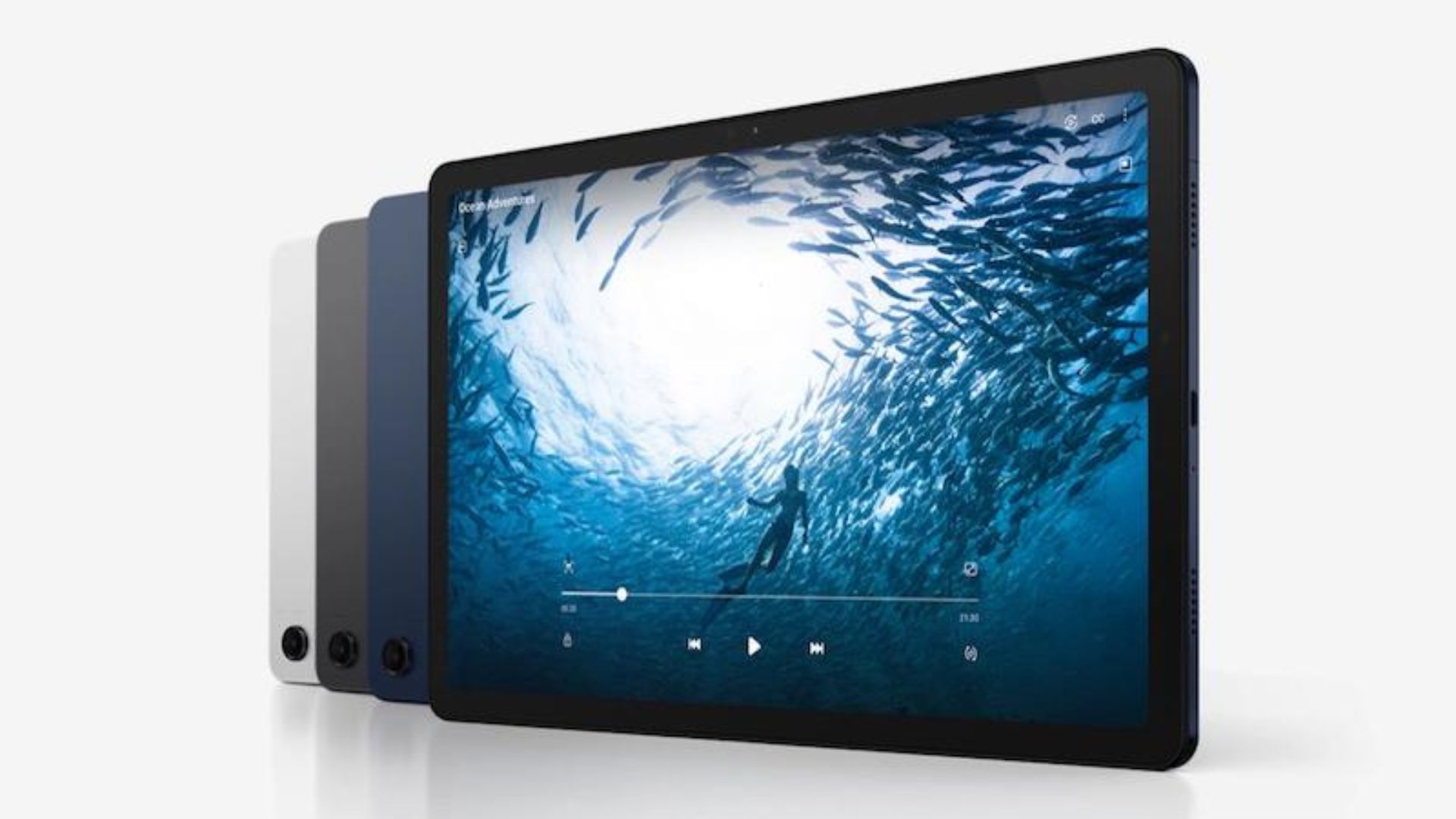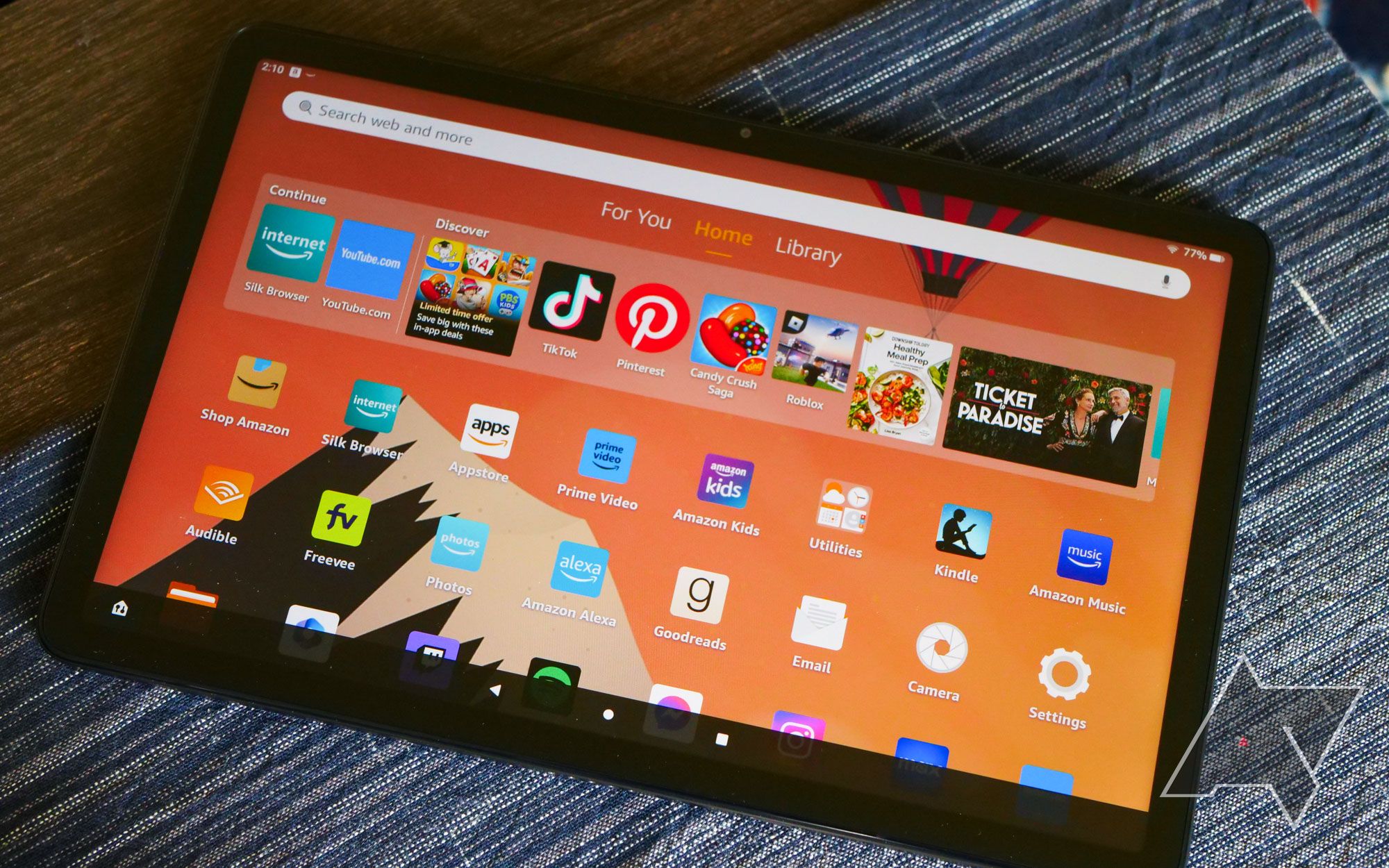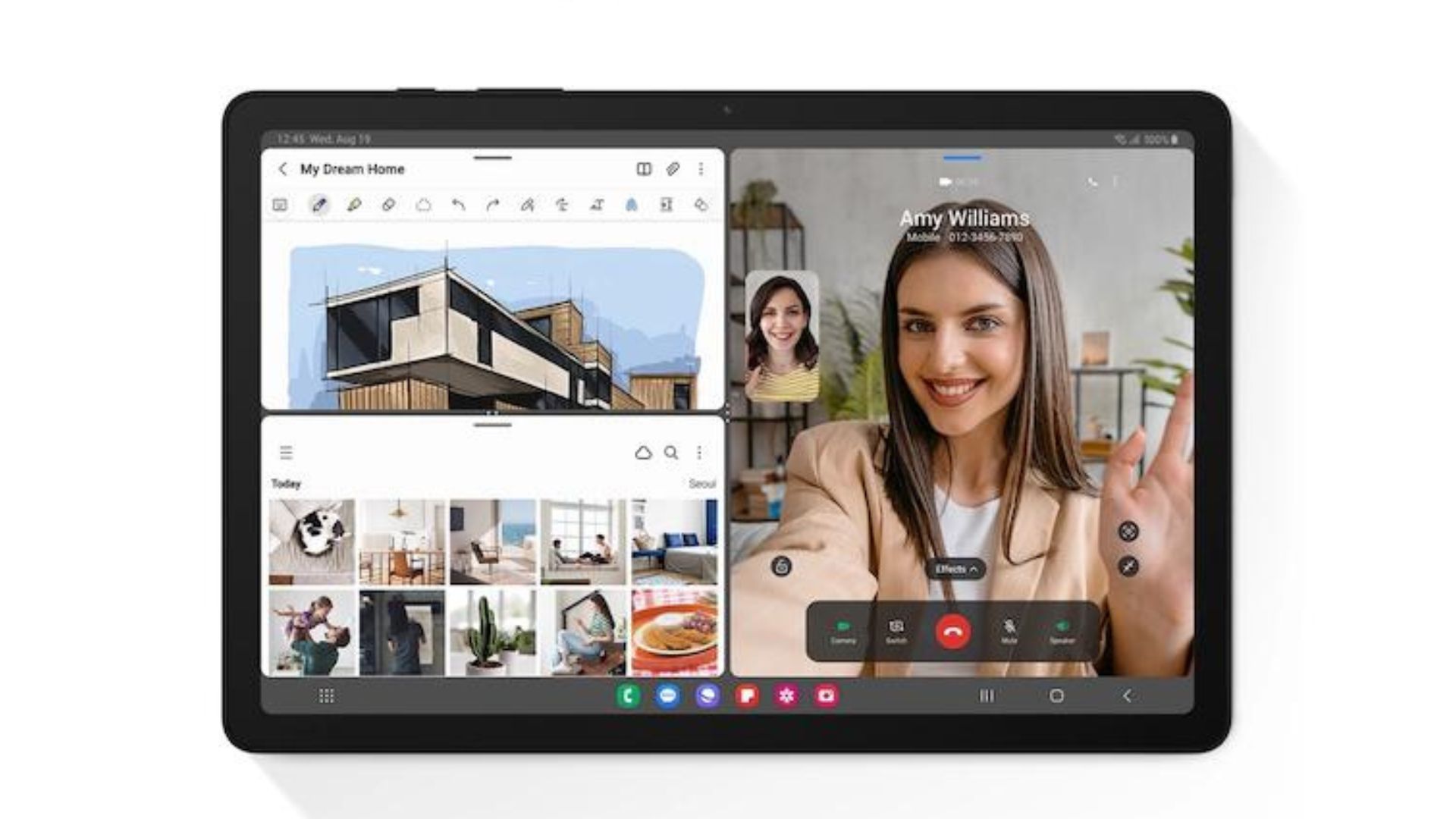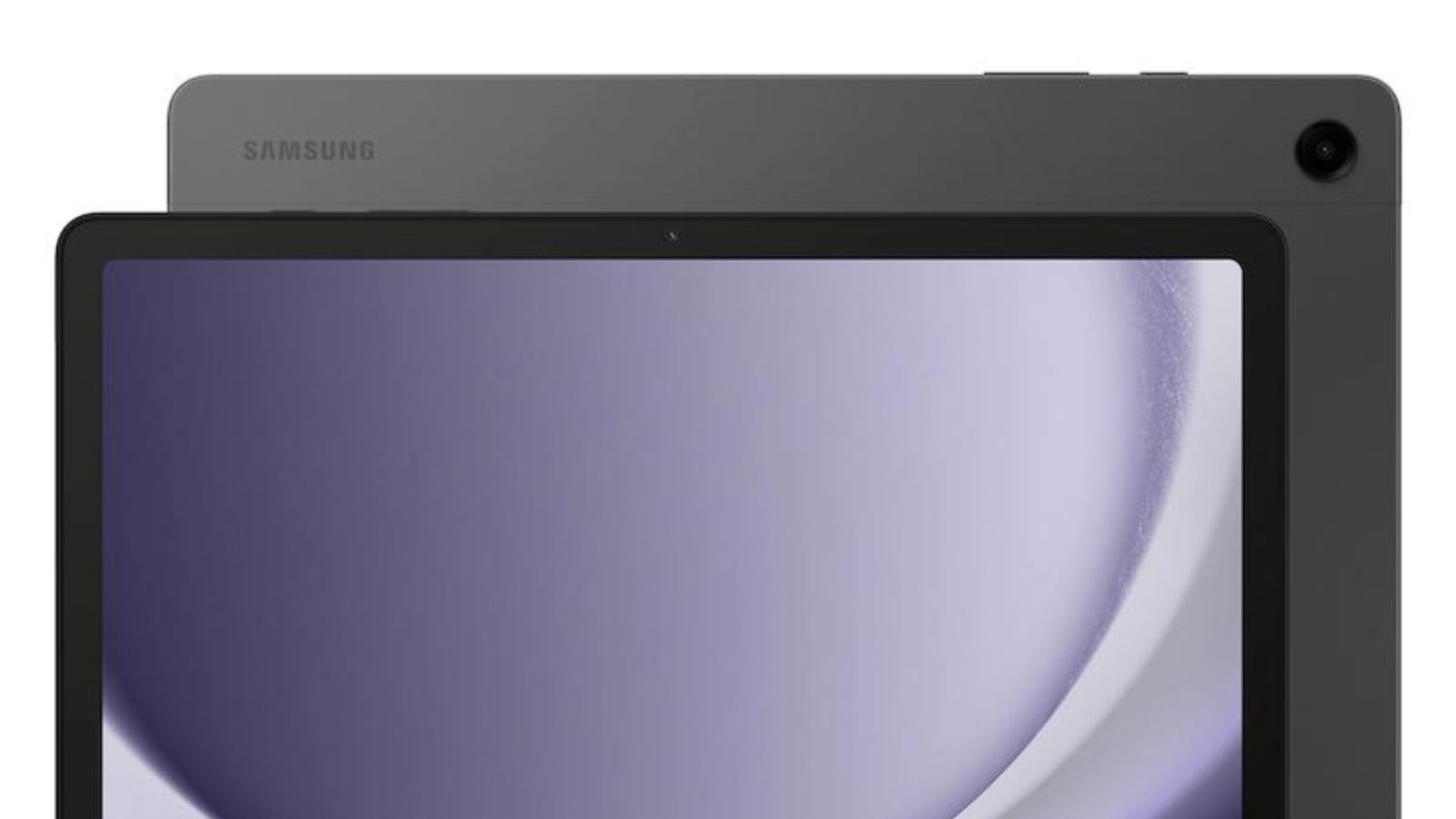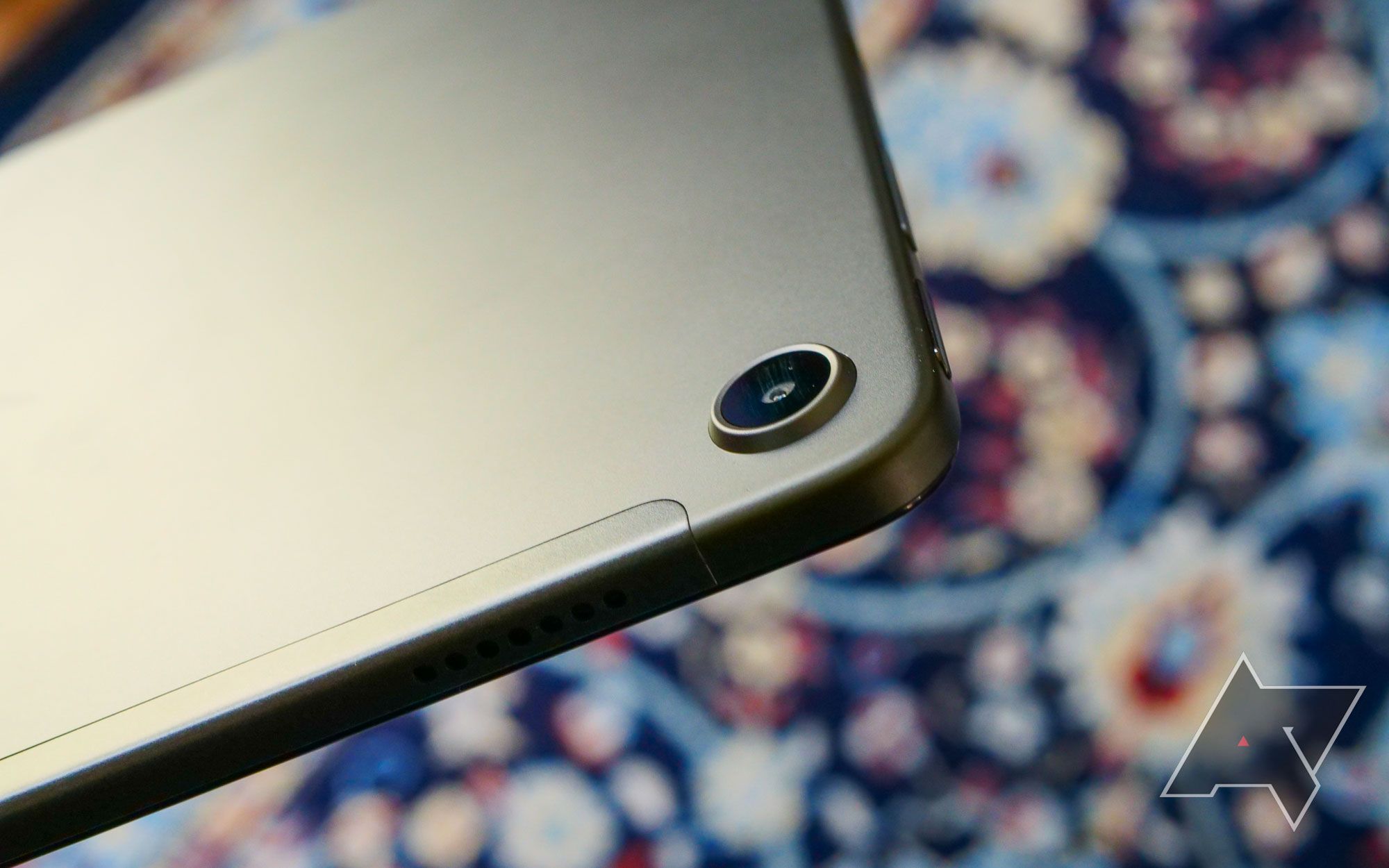-
Samsung Galaxy Tab A9+
Budget greatness$199 $220 Save $21The Galaxy Tab A9+ is a budget-friendly tablet from Samsung. It offers quite a bit for its low asking price, including a good display, fantastic battery life, and great app support. It’s not a perfect tablet, but it does so much right for the price that its shortcomings are easy to overlook.
Pros- Good looking 90Hz display
- Great battery life
- DeX support
Cons- No fingerprint reader
- Cameras aren’t good
- No S Pen support
-
Amazon Fire Max 11
Amazon’s bestThe Amazon Fire Max 11 offers decent hardware at a bargain price. You may need to buy the version with ads on the lock screen to get that low price, but if you need a device to consume media on a budget, then the Fire Max 11 is a solid choice. Just don’t expect good app support.
Pros- Great battery life
- Good display for the price
- Has stylus support
Cons- FireOS needs to go
- Cheapest option has lock screen ads
- Cameras quality isn’t good
Android tablets have come a long way in just a few short years. While it’s true that the best Android tablets often reside at higher price points, that doesn’t mean the lower end has nothing to offer. Cheap Android tablets have come into their own and now offer an enjoyable and usable experience at a budget price.
Samsung and Amazon have battled it out in the lower-end segment for years, continually attempting to outdo each other and earn your hard-earned money. Samsung takes a more traditional approach to Android tablets with the Galaxy Tab A9+, while Amazon beats its own drum with the Fire Max 11. Both companies are firmly established in the tablet market, so it’s time to find out which offers the best bang for your buck.
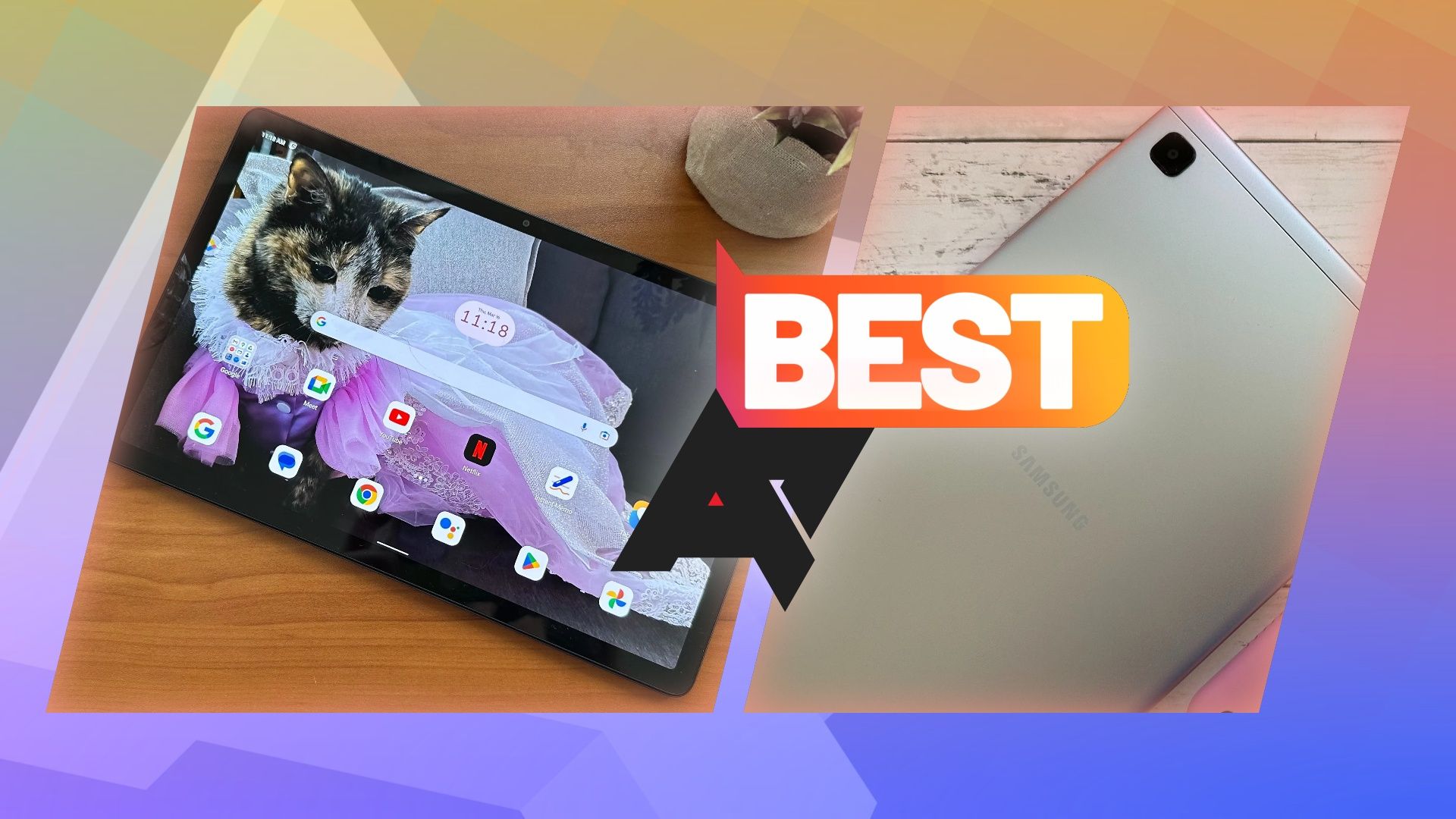
Best cheap Android tablets in 2024
Versatile, affordable Android tablets great for entertainment, work, and communication
Price, availability, and specs
The Samsung Galaxy Tab A9+ launched in the US in January 2024 in multiple configurations to cover just about every need. If you’re looking for a Wi-Fi-only model, you have the option of two versions. The first one has 4GB of RAM and 64GB of storage that retails for $220, while the second is a bit beefier with its 8GB of RAM and 128GB of SSD storage for $270. The 4GB RAM version also has a 5G option that sells for $270.
The Wi-Fi models come in either graphite, silver, or navy, and the 5G version is only available in graphite. The Galaxy Tab A9+ can be purchased directly from Samsung from retailers like Amazon or wireless carriers like AT&T, T-Mobile, or Verizon.
With a launch date of May 23, 2023, the Amazon Fire Max 11 came out a bit earlier than Samsung’s offering. The Fire Max 11 has two different configurations, but Amazon gives you the choice to include or omit lock screen ads; choosing ads will drive the price down a bit.
The 64GB Fire Max 11 is available with lock screen ads for $230 or without ads for $245. There is a 128GB ad-free version which retails for $280. No matter which version you want, it comes in one color: gray. You can purchase the Fire Max 11 from retailers like Amazon or Best Buy.
-
Samsung Galaxy Tab A9+ Amazon Fire Max 11 SoC Qualcomm Snapdragon 695 Mediatek MT8188J Display type TFT LCD, 90Hz IPS LCD, 60Hz Display dimensions 11″, 16:10 11″, 5:3 Display resolution 1920 × 1200 2000 x 1200 RAM 4GB or 8GB 4GB Storage 64GB or 128GB, microSD card to 1TB 64GB or 128GB, microSD card to 1TB Battery 7,040mAh 7,500mAh Charging speed 15W wired 15W wired Charge options USB-C wired USB-C wired Ports USB-C USB-C, Pogo Pin for optional keyboard Operating System Android 14 and One UI 6 Fire OS, based on Android Front Camera 5MP 8MP Rear Camera 8MP 8MP Wi-Fi connectivity Wi-Fi 5, Wi-Fi Direct Wi-Fi 6 Bluetooth Bluetooth 5.1 Bluetooth 5.3 Dimensions 257.1 × 168.7 × 6.9mm 259.1 x 163.7 x 7.5mm Weight 480g 490g Colors Silver, Graphite, Navy Gray Price From $220 From $230 SIM support Single (5G model only) No
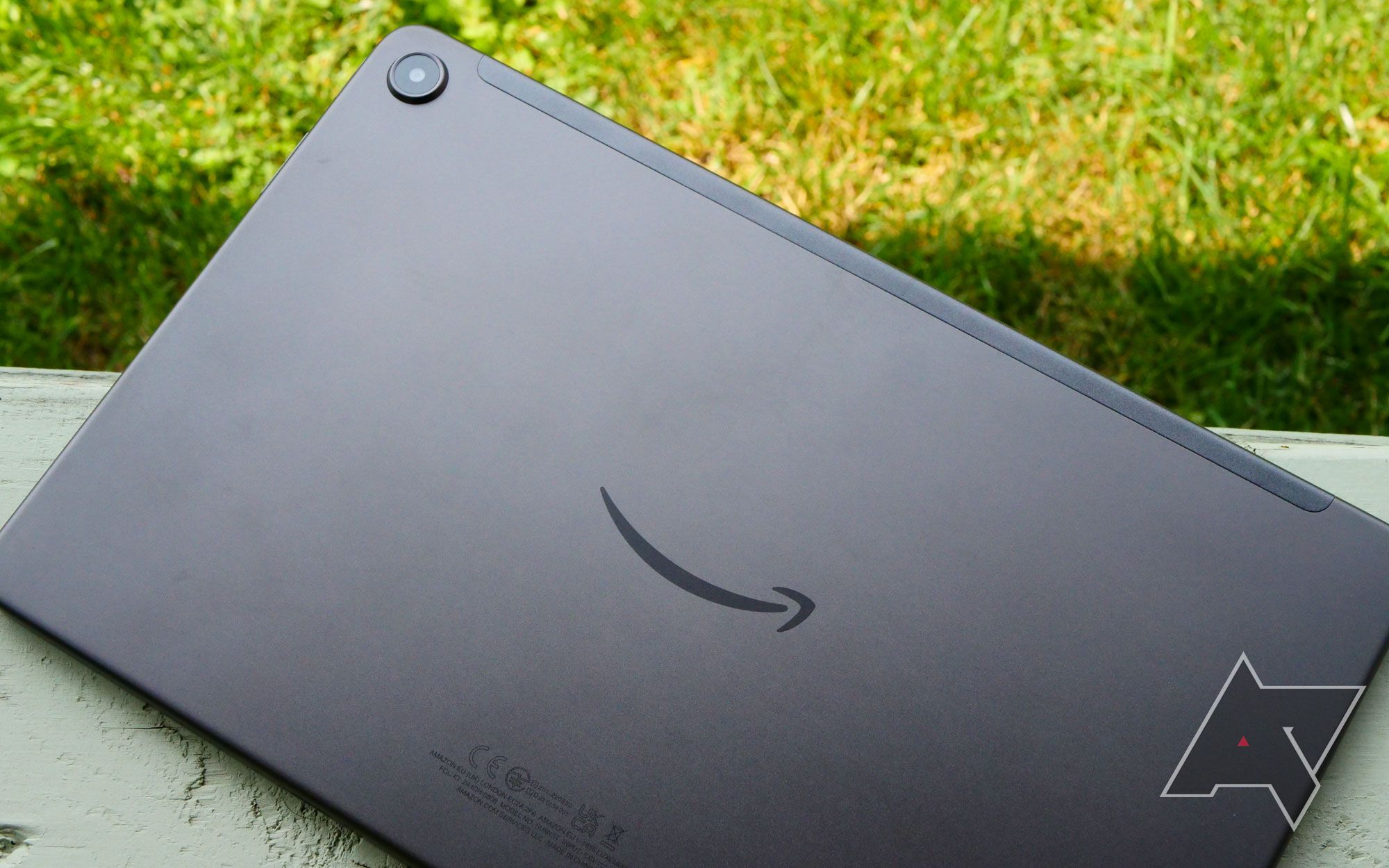
Amazon Fire Max 11 review: Dude, where’s my app store?
Amazon’s most expensive tablet yet is held back by a pitiful app experience
Design
Splitting hairs
Neither Samsung nor Amazon won any design awards for these tablets. They have a very traditional design, complete with a single camera on the back and an aluminum frame. Of the two, Samsung has a slight edge; its tablet looks a little more premium. But both of these inexpensive tablets have sizeable displays, which makes them bigger than your average tablet.
The Samsung Galaxy Tab A9+ measures 257.1 x 168.7 x 6.9mm and weighs 480g. At 259.1 x 163.7 x 7.5mm, the Fire Max 11 is a bit taller, narrower, and a little thicker. At 490g, it’s also a bit heavier, but not enough that it’s going to make a drastic difference in real-world use.
Holding the Galaxy Tab A9+ in landscape mode puts the power and volume buttons on the top-left edge of the device. You get two stereo speakers along the left edge, and two additional speakers as well as the USB-C port on the right edge. The bottom houses a Pogo Pin connector and a microSD card slot.
In landscape mode, the Fire Max 11 has its USB-C port, volume buttons, and power button along the right edge, as well as its microSD card tray. It’s worth noting that the Fire Max 11’s power button doubles as a fingerprint sensor, which the Galaxy Tab A9+ is sorely lacking. The Fire Max 11 also has a pair of Dolby Atmos stereo speakers.
The front of both tablets is typical design-wise. You get uniform and decently-sized bezels along the front and a front-facing camera. The bezels aren’t overly thick, offering enough room hold the display without inadvertently touching it.
If you love or need a stylus, you may want to skip the Galaxy Tab A9+ as it doesn’t support Samsung’s S Pen. The Fire Max 11 does support the use of a stylus but doesn’t come with one out of the box.
Display
A refreshing advantage
For budget devices, these tablets offer decent displays. The Samsung Galaxy Tab A9+ has an 11-inch, 1920 x 1200, TFT LCD panel with a 90Hz refresh rate. The Amazon Fire Max 11 also has an 11-inch IPS LCD panel. The resolution is about the same at 2000 x 1200, and it only has a 60Hz refresh rate.
One thing you may have already noticed is that these devices have slightly different aspect ratios. The Tab A9+ has a 16:10 aspect ratio, while the Fire Max 11 uses a 5:3 one. It’s not a huge difference, but the A9+ will be slightly taller and narrower in landscape mode than the Fire Max 11.
Other than that, the displays should offer similar performance thanks to their similar tech. The Tab A9+ will feel a lot smoother in day-to-day use thanks to its higher refresh rate, but colors will be about the same.
Software
Not all app stores are created equal
Samsung and Amazon approach software very differently. Samsung takes the more tried and true route, while Amazon likes to do things its way. The Galaxy Tab A9+ comes with Android 13 and One UI 5.1. For anyone not new to the Android world, you can expect your typical software from Samsung tablets, sans the S Pen.
The Tab A9+ offers parental controls, multitasking with a split screen mode, and Samsung’s slew of apps. If your favorite Android app is available for Android tablets, then it’ll likely work with the A9+. The A9+ has Dex onboard, allowing you to turn your tablet into a mini-computer. Samsung also guarantees two Android OS updates and four years of security updates.
Amazon uses Fire OS, which uses Android as the base of its operating system but is far more than a skinned version of Android. Fire OS 8 is a complete Android reimagining, with all of Google’s tools and apps removed and replaced with Amazon’s offerings. This includes the elimination of the Google Play Store, so you will be heavily reliant on Amazon’s App Store.
Apps are hit-and-miss with the Fire Max 11. No Google means apps like Gmail, YouTube, and Docs are a no-go, but some heavy hitters such as Slack are also completely missing. If you have apps that you heavily rely on, you should make sure they are available on Amazon’s tablet. Amazon’s software update policy is also a lot murkier than Samsung’s policy. Amazon guarantees security updates until at least four years after they stop selling the device. It mentions nothing about OS upgrades, so this tablet has the possibility of forever remaining on Fire OS 8.
Performance
You get what you pay for
Budget devices typically have lower performance, and that remains true with these two tablets. The Galaxy Tab A9+ ships with a Snapdragon 695 processor and either 4GB of RAM and 64GB of storage or 8GB of RAM and 128GB of storage. If you don’t need cellular connectivity and can swing the higher price, the 8GB model will offer a lot more breathing room to navigate the software.
The Amazon Fire Max 11 comes with a Mediatek MT8188J processor coupled with 4GB of RAM and either 64GB or 128GB of storage. Luckily, both tablets have expandable storage because 64GB is a bit anemic by today’s standards.
As far as these processors go, the performance will be about the same. Opening apps, navigating the OS, browsing the web, and checking email won’t be a problem. Neither processor is a gaming powerhouse, but easier-to-run titles should do just fine. Just keep in mind that 4GB of RAM will cause apps to refresh quite often.
Battery life
Slow and steady wins the race
Battery life on both of these tablets is very good. The Galaxy Tab A9+ has a 7,040mAh battery that’ll easily last you an entire day. It can be charged at up to 15W over USB-C and, sadly, doesn’t include wireless charging.
The Fire Max 11 has a 7,500mAh battery that can also easily make it through an entire day. Amazon does include a 9W charging brick in the box, but the Fire Max 11 can charge at up to 15W over USB-C. It also completely lacks wireless charging.
Neither of these devices will charge very quickly. Your best bet is to charge them overnight as it’s going to take hours to power up, even at their 15W max.
Camera
Built for the basics
The tablets’ cameras won’t sell you either way. Tablet cameras aren’t known for their great quality, and that’s especially true at this price. Samsung outfitted the Galaxy Tab A9+ with an 8MP front-facing camera that can shoot video at 1080p at up to 30fps. It also has a 5MP front-facing camera that can record 1080p video at up to 30fps.
Amazon’s Fire Max 11 also has an 8MP rear camera that can shoot 1080p video at up to 30fps. The selfie camera is also 8MP and can record 1080p video at up to 30fps.
The rear camera on both devices won’t take quality photos. You can expect a lot of grain and noise in any images taken with these tablets that will be more pronounced as the lights dim. The front-facing cameras on each device should be serviceable for video calls, but don’t expect to launch your vlog with them.
Which is right for you?
Choosing a tablet can be a difficult experience. Luckily, there isn’t much of a choice in this competition. While the Amazon Fire Max 11 is one of the best Amazon Fire tablets on the market, it just can’t keep up with the Samsung Galaxy Tab A9+.
Samsung did a phenomenal job of keeping the cost down on the Galaxy Tab A9+, still providing a tablet with enough performance and a complete feature set. It really is one of the best Samsung tablets for the price. It has a good display, great battery life, and decent performance. Samsung has spent years developing its One UI for tablets, and it shows with the A9+. From the inclusion of DeX to its multitasking prowess, you can just get more done. This is especially true if you opt for the 8GB version.
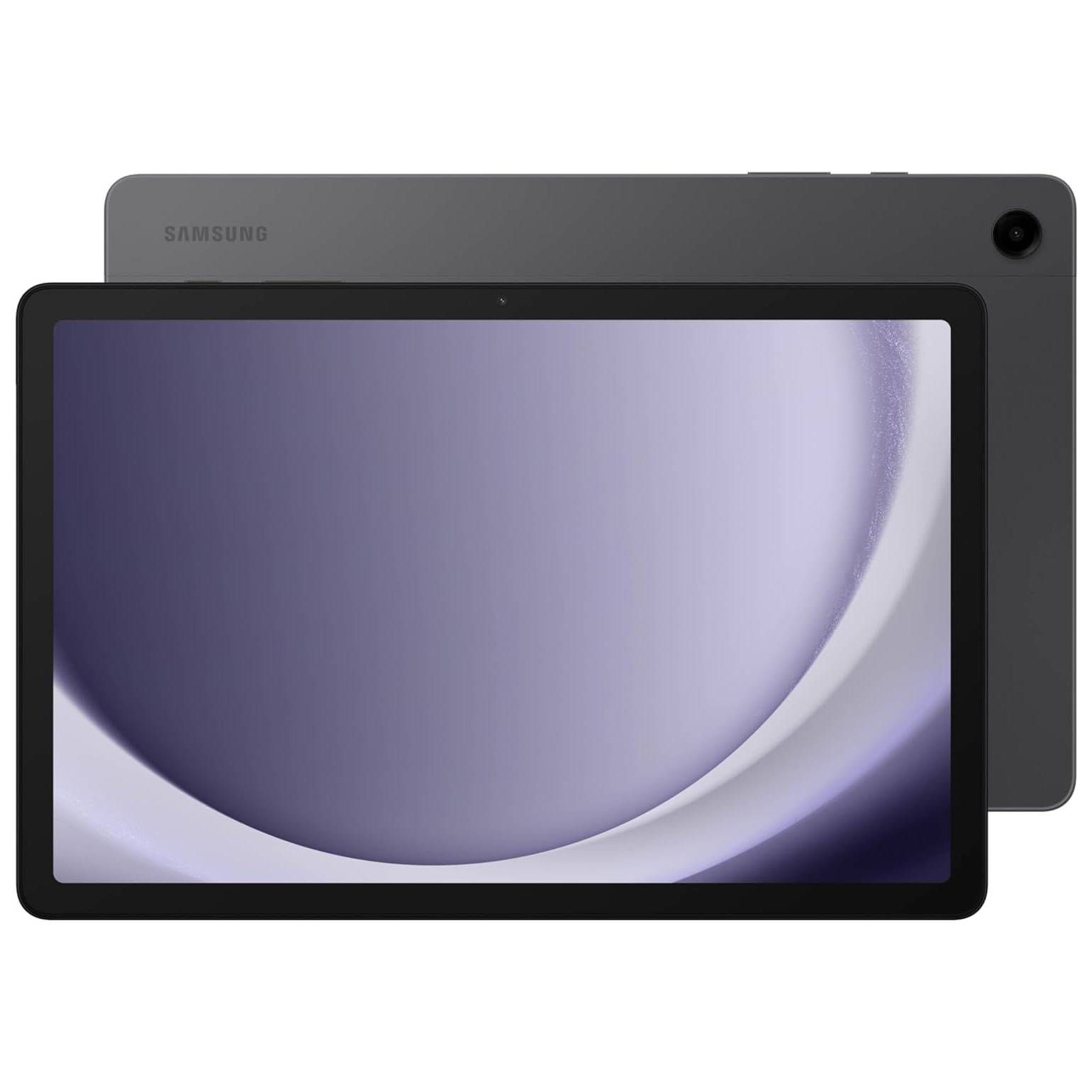
Samsung Galaxy Tab A9+
Packs a lot in for the cost
The Samsung Galaxy Tab A9+ is simply one of the best budget Android tablets available today. It does it all, providing decent performance, a good-looking display, and great battery life. Samsung has also done a wonderful job tuning One UI to work with these bigger tablets, enabling some serious multitasking.
The Amazon Fire Max 11’s hardware is quite good. It matches the Galaxy Tab A9+ in just about every category. The Fire Max 11 even manages to surpass Samsung’s offering with its fingerprint reader and stylus support.
Where Amazon continues to drop the ball is with its insistence on using FireOS for its tablets. Understandably, Amazon wants to have tight control over its tablet software, but it’s hampering what is otherwise a solid offering. It’s about time that Amazon joins the masses and delivers an Android tablet, running an actual Android version.
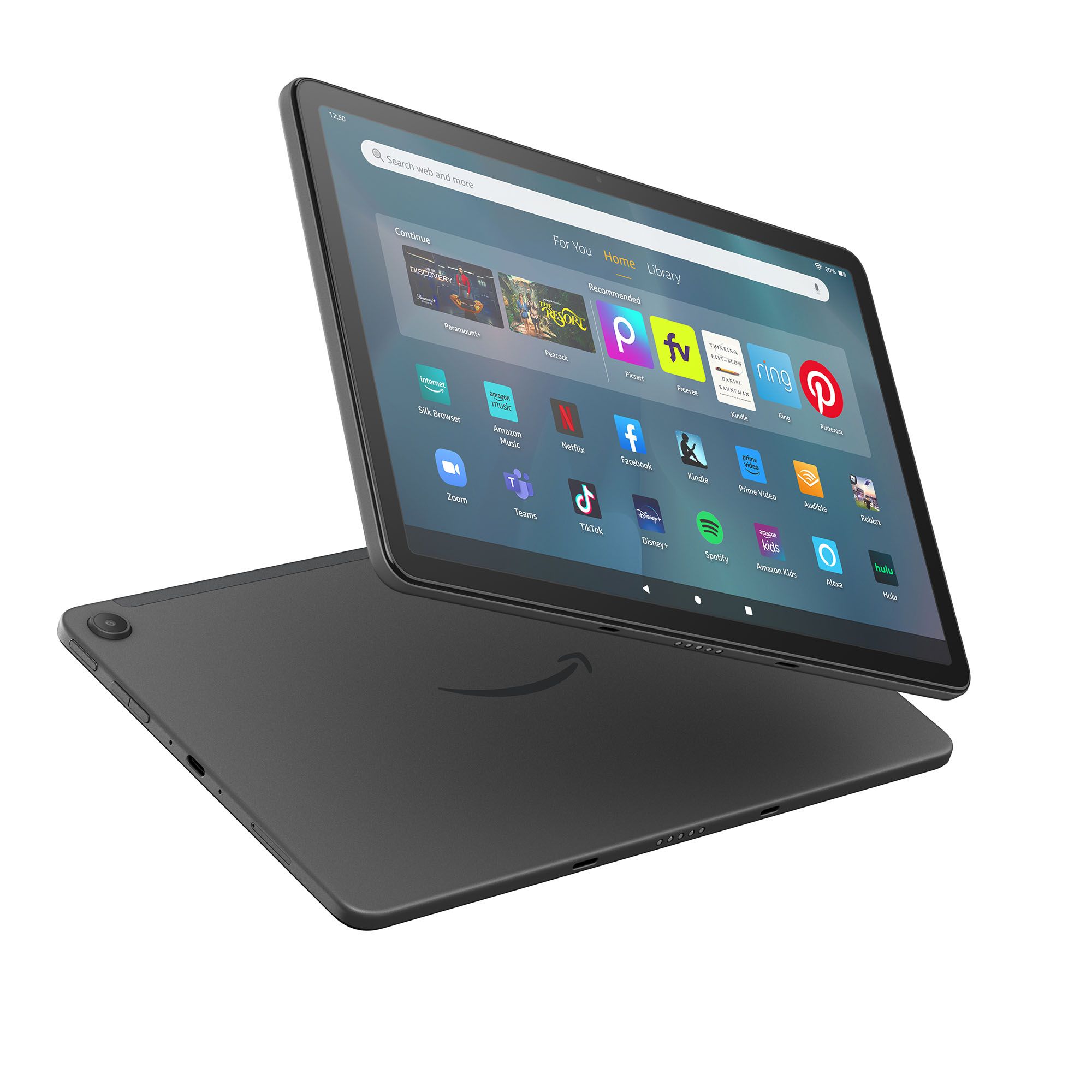
Amazon Fire Max 11
Great at the basics
The Amazon Fire Max 11 is a solid choice if your needs are basic or rely heavily on Amazon services. If you need more than the basics, or you need Google’s services, you can safely skip this tablet for a better-equipped model running Android.




